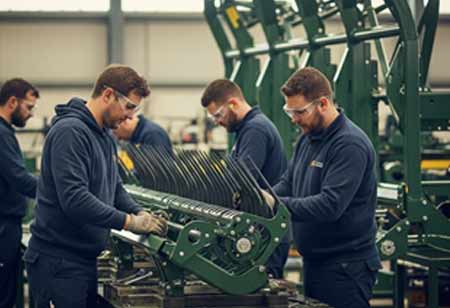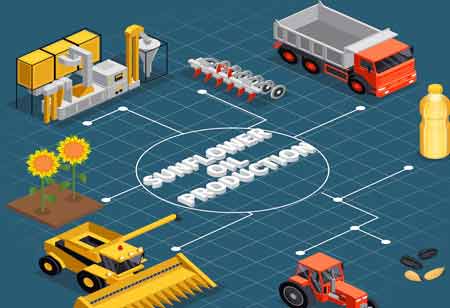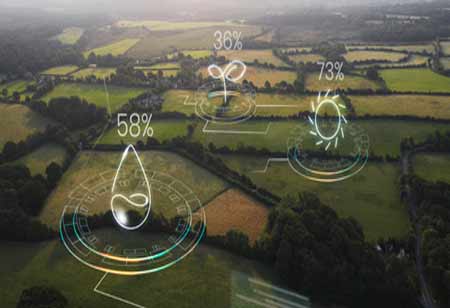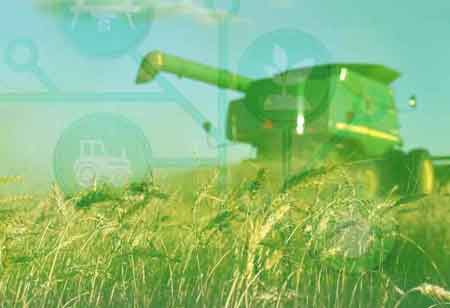Thank you for Subscribing to Agri Business Review Weekly Brief
The Commercial Maturity of Biopesticide Solutions in Industrial Agriculture
Biopesticides are transitioning from niche products to essential tools in industrial agriculture, offering targeted pest control, eco-friendliness, and economic viability, supported by advanced formulations and regulatory frameworks.
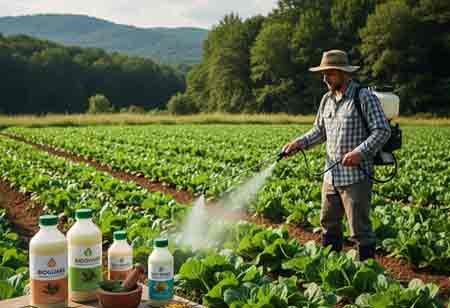
By
Agri Business Review | Friday, October 03, 2025
Stay ahead of the industry with exclusive feature stories on the top companies, expert insights and the latest news delivered straight to your inbox. Subscribe today.
The landscape of industrial agriculture is undergoing a pragmatic transformation. For decades, the narrative of crop protection was dominated by a singular reliance on synthetic chemistry, a model that delivered unprecedented yields and fed a burgeoning global population. Today, that narrative is expanding. The commercial coming of age of biopesticides is underway—solutions derived from nature that have transitioned from a supplementary niche to an integral, high-performance component of mainstream agricultural production. This shift is not a retreat from technology, but rather an embrace of a more sophisticated and integrated approach, marking a new era of maturity for biological crop protection at an industrial scale.
Formulation Breakthroughs Driving Widespread Adoption
The journey of biopesticides from the fringes of specialty organic farming to the vast fields of conventional row crops is a story of scientific and commercial evolution. Initially perceived as inconsistent or slow-acting, modern biologicals are the product of decades of advancement in biotechnology, microbiology, and formulation science. They now stand as a robust and reliable class of tools for the modern grower. The fundamental value proposition lies in their particular modes of action. Unlike broad-spectrum synthetics, many biopesticides target a very narrow range of pest species. This precision ensures that beneficial insects, pollinators, and non-target organisms are left unharmed, preserving the delicate agroecosystem that ultimately supports long-term farm productivity. This inherent selectivity has made them indispensable components of Integrated Pest Management (IPM) programs, where they work in concert with conventional tools to create a more resilient and effective crop protection strategy.
A cornerstone of this commercial maturation is the quantum leap in formulation and delivery technology. Early-generation biopesticides, often live microbial products, required specialized handling and had limited shelf life, posing significant logistical hurdles for large-scale distribution and application. Today’s leading biological products are engineered for stability, longevity, and ease of use. Advanced techniques, such as microencapsulation, protect active ingredients from environmental degradation, ensuring controlled release and sustained efficacy in the field. State-of-the-art fermentation and downstream processing have enabled the production of highly concentrated, consistent, and stable formulations that are fully compatible with existing agricultural infrastructure. A grower can now tank-mix a microbial fungicide or a botanical insecticide using the same equipment as synthetic products, seamlessly integrating these solutions into their established operational workflows without incurring significant capital expenditures or requiring a steep learning curve. This operational parity has been a critical catalyst for widespread adoption.
Expanding Horizons: The Diverse Arsenal of Modern Biopesticides
The diversity and sophistication of the biopesticide arsenal have expanded dramatically. The industry has moved far beyond a handful of well-known microbial strains. The modern biopesticide portfolio is a rich tapestry of solutions, broadly categorized into several classes. Microbial pesticides, which include bacteria, fungi, viruses, and protozoa, offer a vast library of active agents. Some work by outcompeting pathogenic organisms for resources, others produce insecticidal toxins, and some induce systemic resistance within the plant itself, effectively "vaccinating" the crop against future attacks.
Biochemical pesticides represent another pillar of this revolution. These are naturally occurring substances that control pests through non-toxic mechanisms. Pheromones, for instance, are used at a massive scale for mating disruption, preventing pest populations from reproducing without a single drop of insecticide being sprayed on the crop. Plant extracts, derived from botanicals known for their defensive properties, offer potent insecticidal and fungicidal activity with complex profiles that help manage the development of resistance. Cutting-edge developments in RNA interference (RNAi) technology represent the frontier of this field. These solutions utilize targeted genetic material to "switch off" essential genes in specific pests, offering an unparalleled level of precision and a novel mode of action that is both highly effective and environmentally benign.
Shifting Economics and Supportive Regulations Fuel Growth
The economic calculus has also shifted decisively in favor of biopesticides. As manufacturing processes have scaled, production costs have decreased, making biologicals increasingly cost-competitive with their synthetic counterparts. However, the economic value is often realized further down the value chain. Global food retailers and consumers are increasingly demanding produce with lower chemical residues. Biopesticides, with their favorable safety profiles and often-exempt status from Maximum Residue Limits (MRLs), provide growers with a powerful tool to meet these stringent market requirements. This MRL-exempt status offers a significant commercial advantage, granting growers greater flexibility in application timing, especially near harvest, and facilitating access to lucrative international markets with exacting import standards. The influx of significant investment from both venture capital and established agribusiness players further underscores the market's confidence in the long-term profitability and growth trajectory of the biopesticide sector.
Supportive regulatory frameworks complement this market pull. Recognizing the distinct nature and favorable safety profiles of biologicals, regulatory agencies worldwide have developed more streamlined, science-based pathways for their registration. This enables innovators to bring new products to market more efficiently than is often possible for new synthetic molecules, fostering a cycle of research, development, and commercialization.
The era of biopesticides as a peripheral or alternative solution is over. Through profound advancements in formulation science, diversification of active ingredients, proven economic viability, and alignment with market and regulatory drivers, biologicals have firmly established themselves as a mature, scalable, and essential technology in the industrial agriculture toolkit. They are no longer just a component of sustainable agriculture; they are a cornerstone of smart, productive, and profitable agriculture. The future of crop protection will not be a choice between nature and technology, but a sophisticated integration of the two, with scaled biological solutions leading the way toward a more resilient and productive global food system.

